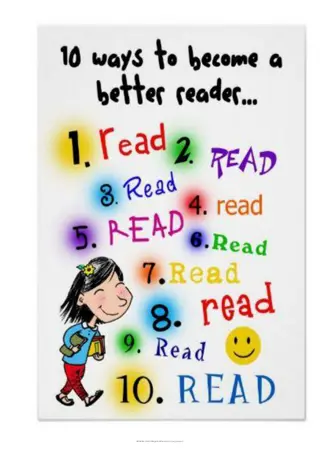Enhancing Classroom Instruction with Depth & Complexity Prompts
Explore how to incorporate Depth and Complexity Prompts into classroom instruction to engage and challenge students. Learn about key parts of prompt cards, sample activities, differentiation strategies, and tips for implementation. Understand the importance of planning instruction that meets the diverse learning needs of all students, promoting critical thinking and deepening understanding across various subjects and topics.
Download Presentation

Please find below an Image/Link to download the presentation.
The content on the website is provided AS IS for your information and personal use only. It may not be sold, licensed, or shared on other websites without obtaining consent from the author. Download presentation by click this link. If you encounter any issues during the download, it is possible that the publisher has removed the file from their server.
E N D
Presentation Transcript
REACHING ALL STUDENTS: THE PROMPTS OF DEPTH & COMPLEXITY & RELATED DIFFERENTIATION STRATEGIES Introduction to the Prompts of Depth and Complexity March 7, 2019 Christopher Persky Support Provider, Induction & Credentialing Department perscj@fusd.net (909)357-7600 ext. 29355
Norms Collaborate and make friends Be present and engaged Focus on the PD (not grading papers) Take technology outside (text and calls) Emphasize what you can do/control 8/13/2015 2 FUSD Induction PD-
Outcome/Goals Teachers will be able to identify the key parts to the prompt cards. Teachers will participate in sample activities for the Depth and Complexity Prompts to incorporate into their classrooms.
CSTP Standards/Elements Standard 4: Planning Instruction & Designing Learning Experiences for All Students Elements: 4.4- Planning instruction that incorporates appropriate strategies to meet the learning needs of all students. Standard 1: Engaging & Supporting All Students in Learning 1.5-Promoting critical thinking through inquiry, problem solving, and reflection.
Depth VS. Complexity Studying many aspects of a single topic Making connections across several topics Going deeper into a subject or academic subjects Becoming an expert in a subject Seeing relationships between seemingly unconnected ideas or concepts
Poll the Audience What group of students were the Prompt Cards originally meant for? A) ELEMENTARY B) MIDDLE SCHOOL C) HIGH SCHOOL D) COLLEGE
Tips For Setting Up The Prompts One Step at a Time- Keep it Manageable Begin with a Strength/Interest Area Subject Start With Icons that make the Most Sense to You Use Suggestions in the Materials Talk with Colleagues Take Risks Always match to Standards
What are the parts to a Prompt card? Task Starters Briefly read How to Get Started Scenarios 1-3 to get an idea on how to start implementing the Prompt Cards in your class. Related Thinking Skills List of Synonyms/Related Terms A list of content areas and topics that can be differentiated by applying the Prompt card.
Why do I need to use these prompt cards? They can be used as question/activity starters or finishers! They can be used as graphic organizers ***All of the Prompts are at the DOK 3 level or higher
Frequently Asked Questions Is there a particular order in how to introduce the Prompts??? -Answer: Technically, NO! ***However, it is a smart idea to begin with the patterns Icon for Kindergarten students How many Prompts do I introduce at a time??? -Answer: For elementary students, only do 1 at a time Middle/High School Students, use at your own discretion
Table Talk Number off from 1-6 at your table. Each of you will take a DIFFERENT Prompt for DEPTH ONLY! When it is your turn, please summarize for your group the following pieces of information about your Prompt Card: Task starters Related Thinking Skills List of Synonyms/Related Terms A list of content areas and topics that can be differentiated by applying the Prompt card.
Activity Time! As we go through the prompts we will do the following activities with the prompt cards Vocabulary Chart Partner/Group Discussions Quick Write- Pair-Shares Make Graphic Organizers Debate Notecard Activity Exit Tickets Frame Activity
Prompts for Depth Rules The guide or procedures one must obey in a discipline; the structure, order, or hierarchy. Rules of Nature Rules of Law Rules of Culture Language of the Discipline Specific Academic Language of a particular field of study. Vocabulary Terms
Prompts for Depth Trends Patterns Situations or ideas Occurrences or concepts Particular to a specific that repeat. period, culture, set of Historical Patterns circumstances Mathematical Patterns Trends in Science and Technology
Prompts for Depth Unanswered Ethics Questions Right, Wrong, and Gray Areas What has not or cannot be Answered The Should Questions Things to Ponder
Prompts for Depth Details *** Big Idea *** Information that Large Universal concepts supports or proves the Ultimate Meanings Big Idea One Word Summaries Relevant pieces but not the whole picture
BREAK TIME!!! Take a 10-minute restroom break before we begin the final activity in tonight s training
Putting it all together for DEPTH! With your table groups, please answer the following questions about each of the Depth Icons related to...
Using Depth in The Story of Cinderella Rules of a Fairytale? Language in a Fairytale? Patterns of the Story? Trends particular to the time the Story takes place? Big Idea or Moral of the Story? Details that prove the Big Idea? Ethical issues in the Story? Unanswered Questions after the Story ends?
Frame Activity for Natural Disasters In table groups, open up the envelope with the name of the natural disaster that you will research using your cellular devices/laptops Pick 4 of the Depth Prompts and find information that can go on each side of the frame with relation to the chosen prompts (this info goes on chart paper) 15 minutes with your group to complete the task One person will present SOME of the findings to the whole group, so work together you never know who will be picked!
Implementation Plan Begin to think about a Prompt and related activity that you would like to try with your students prior to the next collaboration meeting. Begin to write this information on your implementation worksheet.
Outcome/Goals (Revisit) Teachers will be able to identify the key parts to the prompt cards. Teachers will participate in sample activities to incorporate into their classrooms.
Thank you & clean-up Please clean-up your OWN tables. If you have any questions, please feel free to contact me Christopher J. Persky, Full-Time Mentor/Consulting Teacher perscj@fusd.net. 909-357-7600 ext. 29355
Next PD Session Meeting the Needs of SpED Students in all Classrooms Thursday, March 28, 2019 3:45pm at the JDP Center























